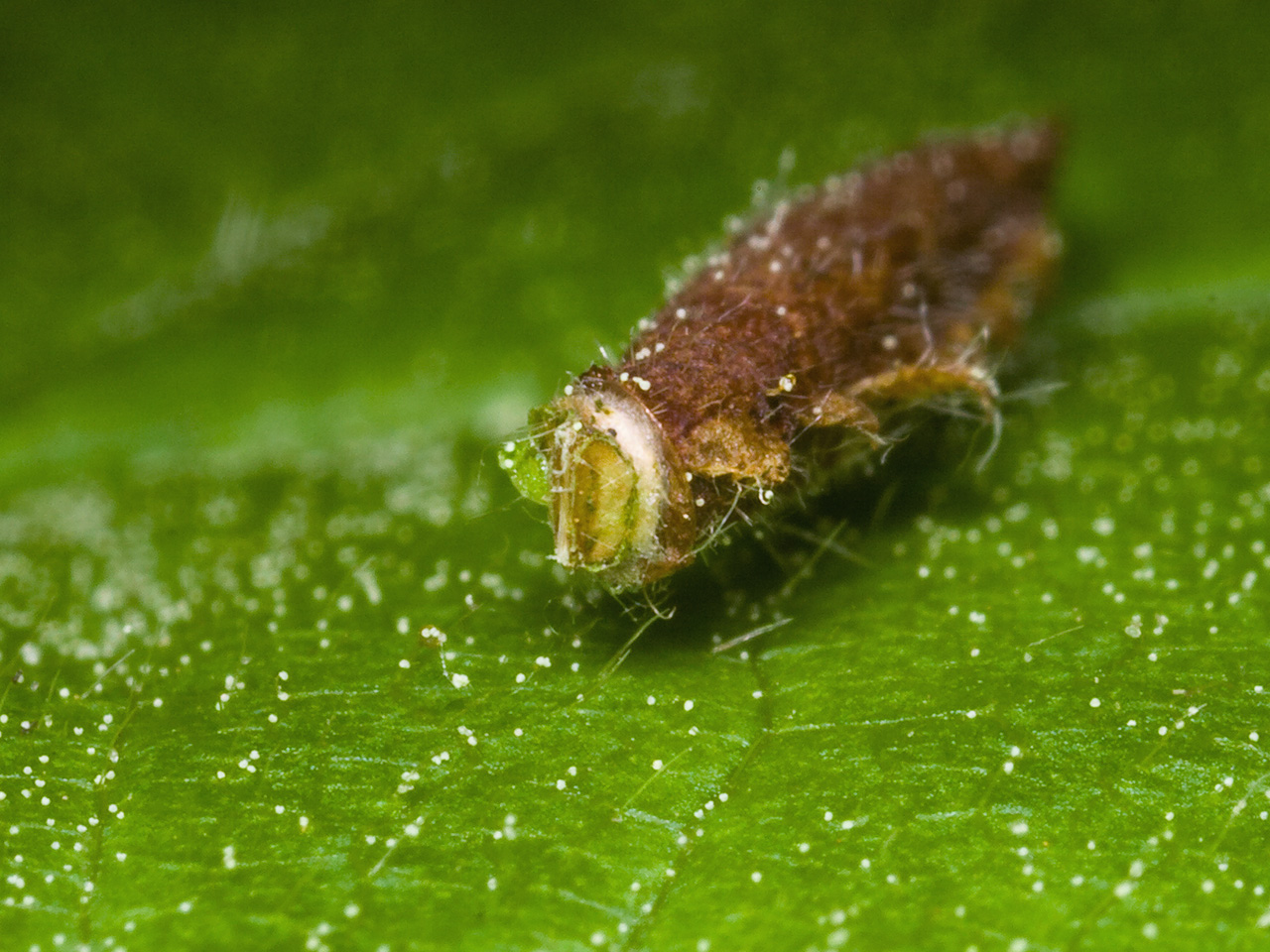
Coleophoridae larval case · makštikandės maišelis
- Case Bearers, Casebearing Moths, Case Moths
- Sækmøl
- Miniersackträger, Sackträgermotten
- Tupekoilased
- makštikandės
- kokermotten
- sekkmøll
- pochwikowate
- säckmalar, säckdragarmalar
- en.wikipedia.org/wiki/Coleophoridae
- naturespot.org/family/coleophoridae?page=1
- gbif.org/species/8838
Coleophoridae family is represented on all continents, but the majority are found in temperate areas of the Northern Hemisphere. They are most common in the Palearctic, and rare in sub-Saharan Africa, South America, and Australia; consequently, they probably originated (like most or all other Gelechioidea families) in northern Eurasia. They are relatively common in houses, they seek out moist areas to rest and procreate.
These "micromoths" are generally of slender build, and like in many of their relatives, the margins of their wings usually consist of a "fringe" of hairs. The tiny caterpillar larvae initially feed internally on the leaves, flowers, or seeds of their host plants. When they emerge to feed externally, they usually construct a protective silken case, discarded and built anew as they grow and molt. The common names of the Coleophoridae refer to this habit.
The bagworm moths (Psychidae), which also belong to the primitive Ditrysia (although to superfamily Tineoidea, not Gelechioidea), build similar cases as larvae. As opposed to these, though, the case-bearer females leave their cases to pupate and have normally developed wings as adults, instead of being neotenous as female bagworms usually are.
Pasaulyje apie 1600 rūšių, Lietuvoje apie 120. Galva su prigludusiais žvyneliais. Ant antenų pamatinio narelio žvyneliai sudaro kuokštą, ant kitų narelių – žiedus. Ramybės būsenos antenos nukreiptos į priekį. Sparnai 4–24 mm ilgio, lancetiški su labai ilgomis blakstienėlėmis, kai kurios rūšys su sidabriškais dryžiais. Pilvelio narelių nugarinėje pusėje dvi eilės chitinizuotų spygliukų. Vikšrai gyvena maišeliuose, išgraužia įvairių augalų lapus. Kelių rūšių makštikandės gyvena žolinių augalų, krūmų stiebuose, ūgliuose ir sukelia sustorėjimus (galus).
‥
0 comments
Add a comment